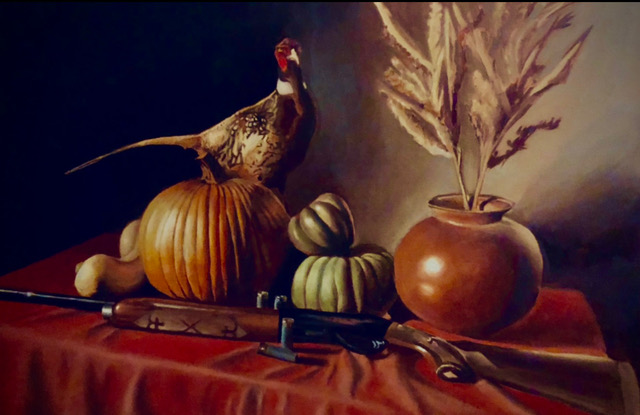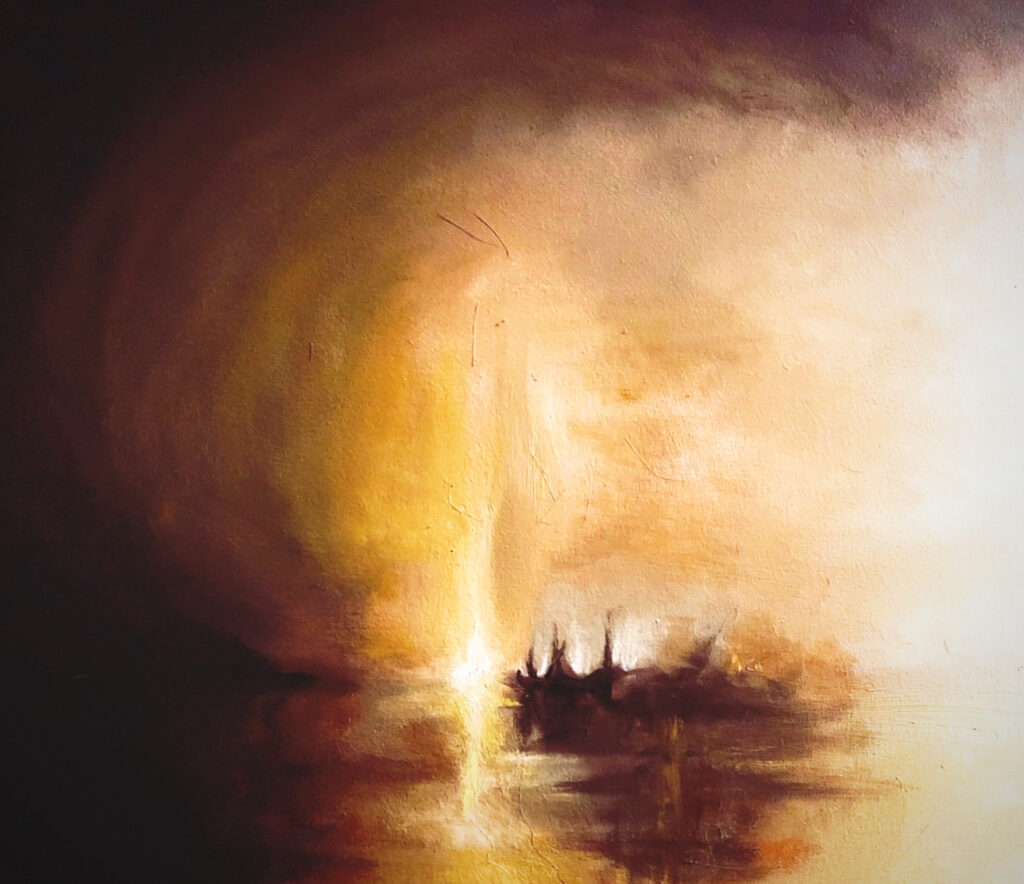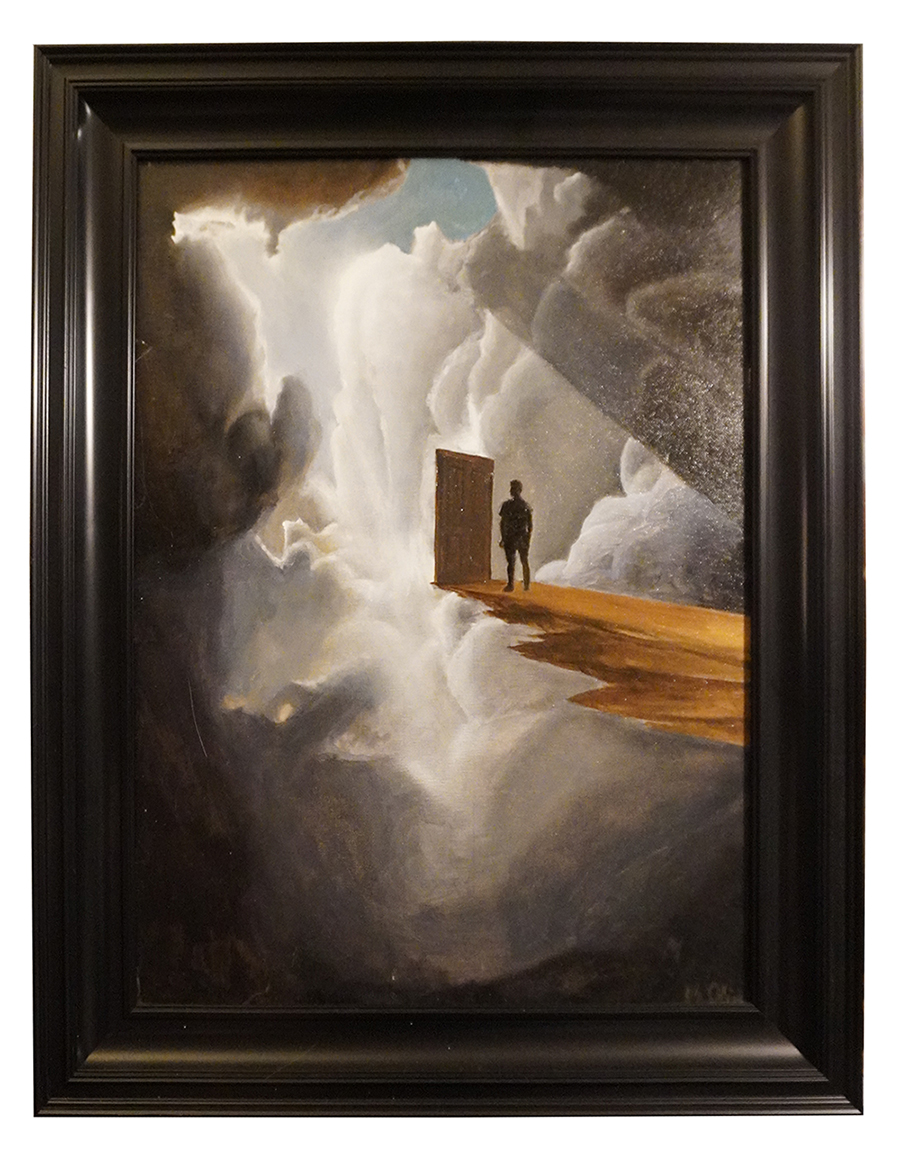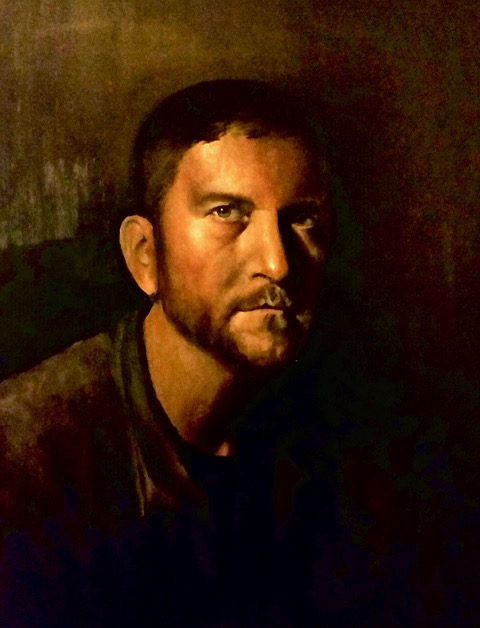Warrington “Max” Oliver
Year of birth: 1979.
Where do you live: Atlanta, GA.
Your education: Bachelors in Fine Arts, Kennesaw State University.
Describe your art in three words: Introspective, Metaphorical, Luminist.
Your discipline: Painting, Drawing.
To always find a singular source of joy, or favorite aspect of every piece I’m attempting to create. If I’m not having fun with it, chances go up that a viewer will not either.
maxoliverart.com | Instagram
 Max Oliver | Harvest | 2022
Max Oliver | Harvest | 2022
Your style combines dark realism with classical luminism. Can you elaborate on what draws you to these particular styles?
To me, Dark Realism represents something of a starting point as a sarcastic reminder of a time in my life when the more realistic things were, the darker they would seem in my mind’s eye.
Once I rediscovered oil painting about ten years ago, I was instantly drawn to all the “painters of light,” also known as luminists. Not just the 19th-century landscape painters, for whom the term was first created, such as Kensett, Lane, and Bierstadt, but also all the classical Renaissance painters of light, including Da Vinci, Caravaggio, and Rembrandt. These painters introduced me to the term chiaroscuro, which basically means the contrast between light and shadow.
Around the same time, I was introduced to sobriety, which cast a beam of light over all the darkness I had always known. That’s why my art gravitates towards illustrating images that articulate this principle of chiaroscuro.
Many of your works depict a transition from reality to a whimsical world. What inspires this shift in your paintings?
I suppose using these transitions serves as a reminder that we all need to lighten up about things. To me, almost anything, no matter how serious, has a playful quality to it if you look hard enough. I believe it softens the eyes, softens the spirit, and brings a disarming quality to the outlook of almost all situations, enough to make you willing to believe in the possibility that everything could turn out all right.
 Max Oliver | Zenith | 2021
Max Oliver | Zenith | 2021
How has your background in assisting with mural projects for schools and businesses impacted your approach to smaller, more personal pieces?
My mother has been a mural artist since before I was born. I grew up watching her paint; I guess you could say I served as her apprentice during much of my upbringing. I observed as she transformed a mere dining room into a beachfront restaurant. I quickly learned how to condense the same types of images onto a smaller scale while delivering the same impact. I could write War and Peace into a comic book. Her whimsical and playful approach has not only shaped my technique but also inspired me to see the world through a more imaginative and light-hearted lens. Today, her influence is evident in my art, where I strive to infuse the same sense of wonder and creativity that she brought to every mural.
 Max Oliver | Furthering Heights | 2023
Max Oliver | Furthering Heights | 2023
Can you discuss a specific piece of your work that holds significant meaning to you and why?
If I had to pick the one piece that holds the deepest, most long-term, metaphorical backbone in relation not only to the philosophy of my artistic journey but to my life in general, I would choose the 24×18” oil on canvas titled “Furthering Heights.”
The composition and concept of this piece are quite simple and direct. It depicts nothing more than a silhouette of a man standing on a stone pathway that leads to a door at the edge of a cliff. The general body language of the man’s silhouette gives the impression that, after traversing the pathway that led him to this door, he is now contemplating whether or not he should continue this journey and find out what lies beyond the doorway. The viewer sees nothing in the background other than a wall of distant thunderclouds with a beam of light shining down from above, leading to what appears to be a dark abyss below.
The concept that this piece is hitting on is simply faith. This man has obviously been traveling this road that led him to the door, and now he must decide. He cannot turn around. He must discover what is beyond the door. He can ascend to a higher place than he’s ever dreamed of, or he can plummet back into the pit. There comes a time when we all must decide to open that door and walk through it. What fate awaits us is whatever we have put our true faith into.
How did pursuing a Bachelor’s degree in Fine Arts influence your technique and artistic perspective?
The pursuit of my bachelor’s degree in Fine Arts influenced my technique and artistic perspective in several ways. I learned fairly early from many of my professors that my overall approach and technique were highly flawed. I found that I had been far too tight, polished, and controlling in my overall approach. I discovered that I needed to loosen up and learn to paint with my arms and entire body, rather than just “chicken scratching” with my fingers, as I had been accustomed to for far too long.
Regarding artistic perspective, I almost instantly developed a fascination with studying the old masters. This involved not only learning about their history and the cultural circumstances in which they created some of their most influential pieces but also attempting to reproduce some of those pieces or to create original work in emulation of their style. Undergoing exercises like these gave me a brand new appreciation for how truly brilliant many of them were.
 Max Oliver | Self Portrait | 2018
Max Oliver | Self Portrait | 2018
What advice would you give to aspiring artists who are dealing with personal struggles similar to yours?
“Good artists borrow, great artists steal.”
– Pablo Picasso
I couldn’t resist beginning my answer to this topic with that quotation. It sums up my philosophy in relation not only to almost all artistic endeavors but also for anyone who is in the process of attempting to reassemble their lives in the wake of some kind of massive life readjustment. In my case, it was the process of recovery from alcoholism. One of the first things I was taught at the beginning of that journey remains one of the most invaluable lessons that I carry with me to this day. That lesson is very simple: find someone that you admire, someone who has things that you’d like to have, and practices principles that you would love to implement in your life. Talk to them, find out how they arrived at the place in their journey that you find desirable, and try to emulate them the best you can. If it’s a historical figure, read all that you can about them or their work. If it’s an artist, recreate a favorite piece that they did. The important thing is a bit corny but couldn’t be more true: someone has already traveled this same road before you did. Do your best to discover how they did it, and put your own spin on it.

Jie
I love your work!!! So talented .